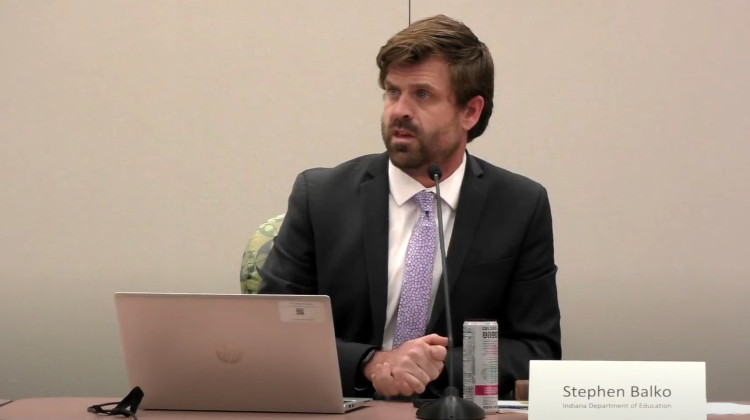We're reporting this week on special education, which means inevitably we run up against questions of how we should refer to students with disabilities and to the disabilities themselves.
It's a minefield, comparable to the tensions and complexity of writing about race and ethnicity.
It's important to get it right. As journalists, of course, we want to be accurate. And clear. And we want to avoid perpetuating stereotypes or giving offense.
There are broader issues as well — not just for reporters but for teachers, parents, administrators, even the United States Supreme Court. The words we use and the ways we refer to people mirror — and shape — our perceptions, our attitudes, our behavior.
So where to begin? The "r" word has fallen out of use and good riddance. "Handicapped," too, for the most part. Generally we don't refer to people as "disabled," as in "he's a disabled student." One good rule of thumb: avoid adjectives. They too easily become labels. Instead, try "students with disabilities."
From there, though, the rules get more complicated. And so, for help, I called up Kristin Gilger. She's an associate dean at the Walter Cronkite School of Journalism at Arizona State University. And she's the director there of the National Center on Disabilities and Journalism.
Where they've put together a style guide to help all of us navigate this minefield.
"Someone once said, 'words matter,' and they do," Gilger told me. "In the journalistic context there's the matter of being accurate, and that's of course our primary concern."
She said it's important, if you're going to put someone in a category, make sure they really belong there. Take blindness, for example. What does it mean to be truly blind?
Here's what the NCDJ style guide says:
This word describes a person with complete loss of sight. Many people who are legally blind have some vision, which they sometimes use in combination with canes, dogs and other low-vision aids. For them the label "blind" is inaccurate. For others, use terms such as "visually impaired," person with "limited vision" or "partially sighted." Currently there is no uniform terminology. It is best to ask the person which term is suitable.
And that leads to a really good point, one Gilger made over and over in our conversation: When in doubt, "our advice to the journalist is to ask the person you're interviewing."
There are larger issues at stake here beyond accuracy. Like being inclusive with your audience.
"When you write about minority or immigrant communities, it's the same thing," Gilger explained. "If you don't understand where they're coming from, their point of view, the meaning of the language they use about themselves, you're not connecting to that community."
And fundamentally there's an issue here of how we perceive and define another human being.
You have to be careful, Gilger says, not to "define the whole person as their handicap. You're not an autistic person, you're a person who's been diagnosed with an autistic disorder. That distinguishes between one aspect of a person and the whole person."
Otherwise, there's a danger of defining people by what they can't do. And implying that somehow that person is, as the style guide says, "suffering or living a reduced quality of life."
Gilger gave me a quick example: "You could make the analogy that you're not a good artist." So, she asked, does that mean I'm "art-deficient?" And would that be the one thing I'd want to read in a single sentence that describes me? It's the same thing: using adjectives to focus on the thing you can't do.
Tough Calls
I asked Gilger what word or issue the center receives the most questions about. Her answer was, to me, surprising: Wheelchairs.
"Yeah, it still tends to be the wheelchair thing. 'Wheelchair-bound?' Or, 'confined to a wheelchair?' Or is it, 'uses a wheelchair?' "
There's quite a detailed explanation on the site if you want the full answer.
Here's another tough call: "When we first started, it was physical disability. But the ones we find more challenging today are mental disabilities. That's a complex and growing area of concern."
Autism alone is a huge challenge.
"It wasn't that long ago," Gilger said, "we were just saying 'autistic.' " But, as medical science and public awareness have advanced, "the language has to evolve too to keep up with that."
And she emphasized that all this isn't about hewing to some notion of political correctness. "It's about being accurate."
Of course, accuracy is a moving target. And, right now, the center is in the process of updating its entire list, "going through it word by word."
Working with a graduate assistant and an advisory board, Gilger starts with a word, then they do some Googling and perhaps talk with outside groups. And they're still coming across new, unfamiliar terms, like 'late-deafened,' which is used to refer to "people who lost their hearing later in life."
Gilger said they're not sure how they'll handle such new terms and new questions in the next update, which they hope to have by the end of the year.
"There is widespread disagreement in the disability community. We're trying to find the mainstream," she explained. "We don't want to be too far behind, or so far ahead that we're using language people don't understand."
9(MDEwMDc1MzM3MDEzNDczOTA0MDc1MzViMQ001))
 DONATE
DONATE







 View More Articles
View More Articles


 Support WFYI. We can't do it without you.
Support WFYI. We can't do it without you.